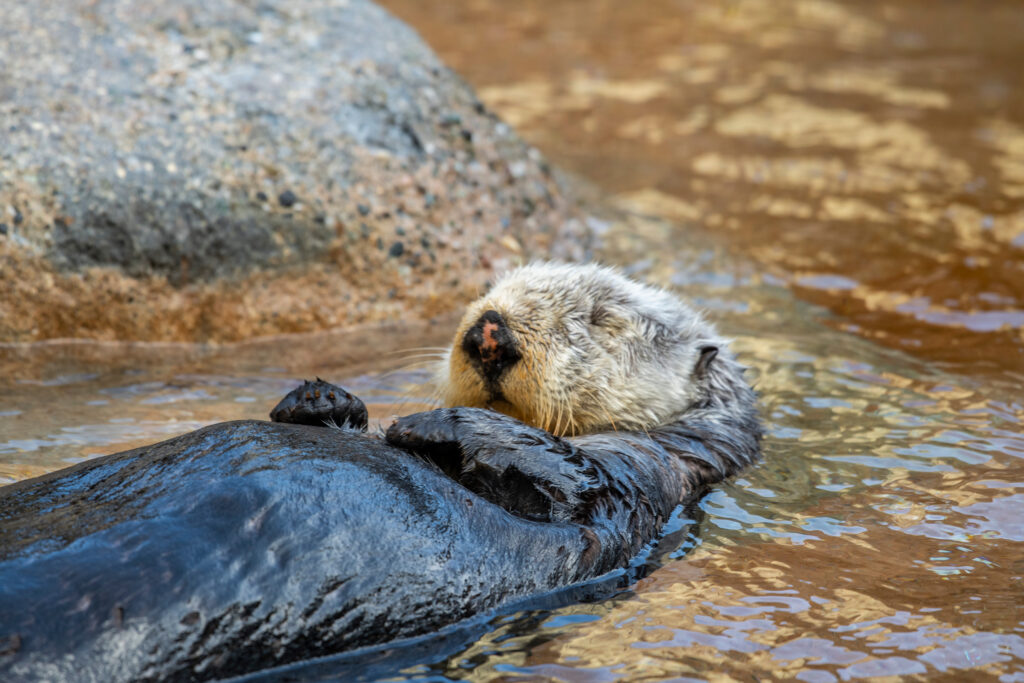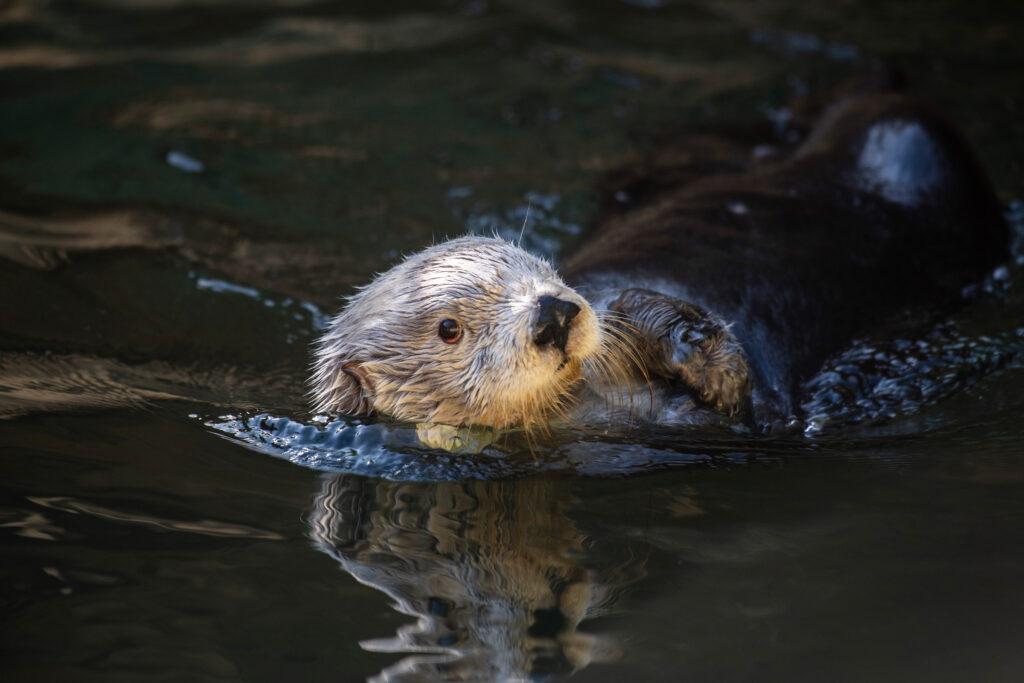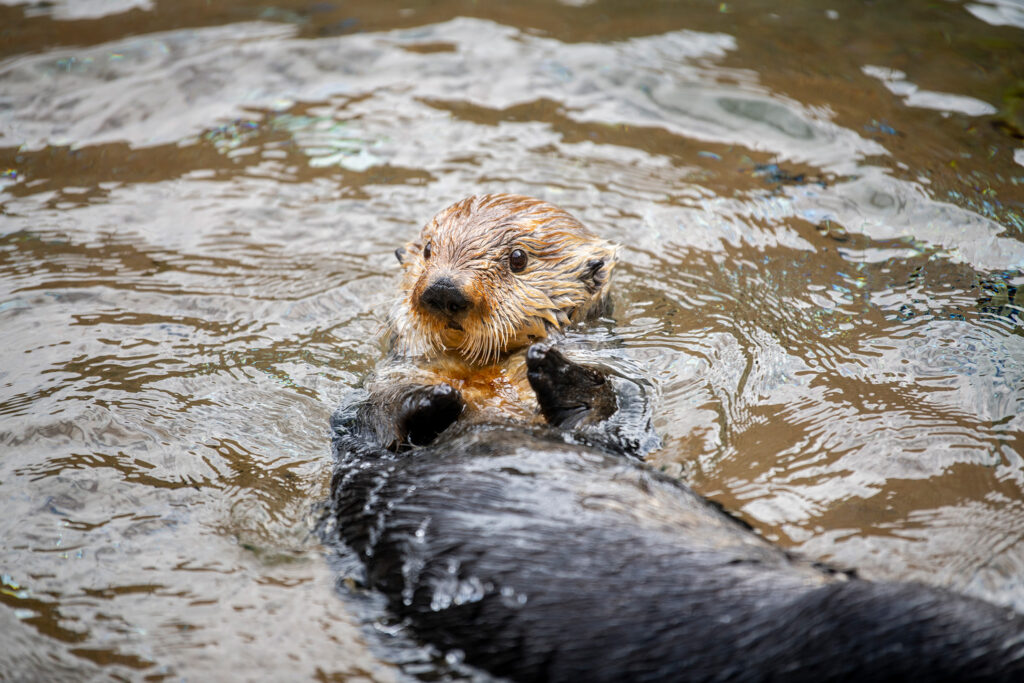Point Defiance Zoo & Aquarium is home to three endangered sea otters in the Rocky Shores habitat. Every year, Sea Otter Awareness Week takes place during the last full week of September to celebrate and inspire deeper awareness of these marine mammals.
Now protected, sea otters are still at significant risk from oil spills, parasites that reach the ocean via storm drains, and plastic ocean trash. All three sea otters living at Point Defiance Zoo were rescued from the wild and deemed non-releasable to the wild by the U.S. Fish & Wildlife Service.
Sea otters are very social creatures, living in groups of up to 100 in the wild. The otters at Point Defiance Zoo are no exception: The three girls can often be seen cuddling together.
Meet Moea
(Pronounced Mia)
Staff at Monterey Bay Aquarium in California rescued Southern sea otter Moea, a stranded otter tainted with oil from a spill. Sea otters rely on their thick fur to keep them insulated and warm, grooming it often to keep it waterproof. When it gets coated with something they can’t clean off themselves – like oil – they can lose the warmth they need to stay alive in cold North Pacific waters.
After rehabilitating Moea, Monterey Bay Aquarium staff returned her to the wild. But the little otter seemed to prefer the company of humans and returned. Because her affinity for people could harm her in the wild, the Monterey Bay Aquarium found her a home at Point Defiance in 2018. Moea will remain in human care for the rest of her life.
Moea is estimated to be 13 to 15 years old, and keepers describe her as “the sweetest otter.”
“Moea is calm and confident and loves her food,” said Assistant Curator Sheriden.
Even her name is food-related – a contraction of the scientific name for “sweet potato.”
Moea is also the most independent of the three sea otters. If you see an otter by herself in the pool, it’s probably Moea.
How to spot her: Moea has a pink scar on her nose. Many female sea otters have a similar scar from mating in the wild. You can also spot Moea swimming around with a toy on her stomach or sleeping as much as possible.
Meet Clara
Clara is a 14-year-old Southern sea otter who arrived at the zoo in July 2022. Clara was rescued at Moss Landing Harbor, California, and deemed non-releasable due to a history of unsafe interactions with people and pets.
“Clara is calm, patient, and exceptionally bright,” said Sheriden. “She enjoys puzzle feeders to work for her food or treats.”
Sheriden also said Clara enjoys grooming, napping, and relaxing with ice treats. Her favorite foods are shrimp and shelled items like mussels, tiny clams, and crab.
How to spot her: Clara has blonde fur on her head.
Meet Libby
Libby is also a Southern sea otter rescued from the wild by the Monterey Bay Aquarium. She was found abandoned at just 24 hours old. Often, a mother sea otter will leave a pup if she gives birth to twins (generally, they just have one and can’t care for two) or if they suspect their pup is sick. There is no way to know for sure why Libby was left. Staff at Monterey Bay Aquarium quickly jumped in to help, hand-raising Libby back to health before finding her at new home at Point Defiance Zoo when she was just six months old. She is now 12 years old.
“Libby has a lot of energy and seems to enjoy her training sessions,” said Sheriden. “She’s opinionated and curious about anything that goes on in her habitat.”
Daily training sessions provide mental and physical stimulation for the sea otters and encourage natural behaviors.
How to spot her: Like Clara, Libby has blonde fur on her head, and is the smallest of the three otters.
Protecting sea otters in the wild
Sea otters are vital for the health of coastal ecosystems, particularly kelp forests like those of Puget Sound and Monterey Bay, as they love to eat the purple sea urchins that would otherwise devour these underwater forests completely. Take action and help sea otters.


